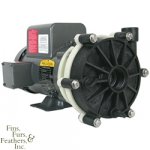pnoyreefer
Pek-P3K LicK3I2
- Location
- Washington NNJ 07882
My 180g tank needs an overhaul in plumbing department as I am not good in that area. I met Dave ( Psychographic) over at my place when we had our montly meetings. I kept in touch with him knowing that I have a fellow reefer who is 5 mins away from me. He watched over my tank also when I was gone for 4 days and really did a great job and from there on, I ask him if he can redo my plumbing as I hate my plumbing looks ( crooked, leaking ) . He willinlgly say yes and offer to do it for me. I just want to thank him for all his effort and time doing this as I know he is a busy guy. Thanks Dave !

This was taken lastnight and he did dry fit the top part and the bottom overflow. I was amazed how he did all this on less than 2 hrs lol.. I like it a lot..
Top


more info and pics to come
Steve

This was taken lastnight and he did dry fit the top part and the bottom overflow. I was amazed how he did all this on less than 2 hrs lol.. I like it a lot..
Top


more info and pics to come
Steve






